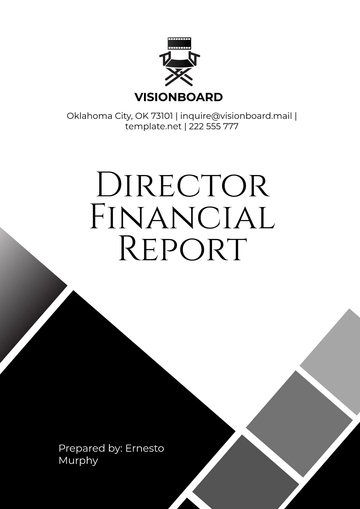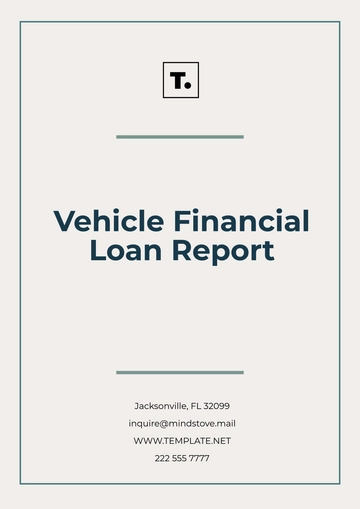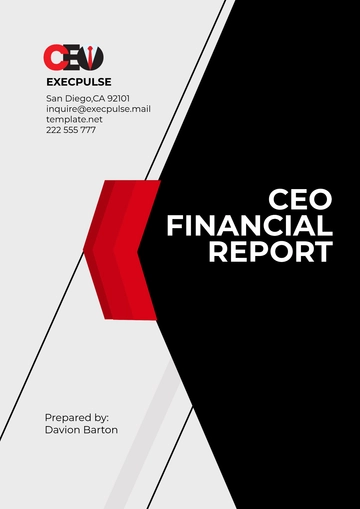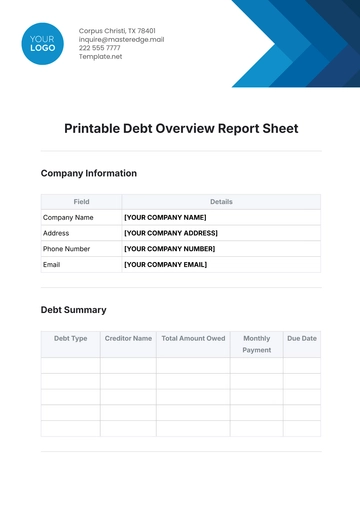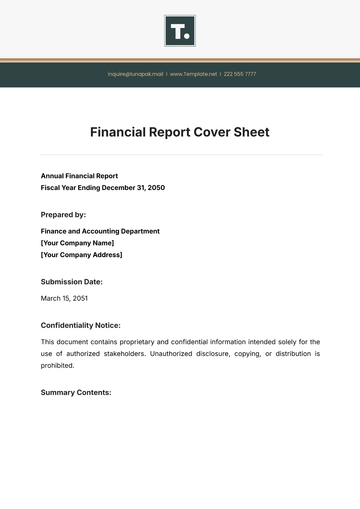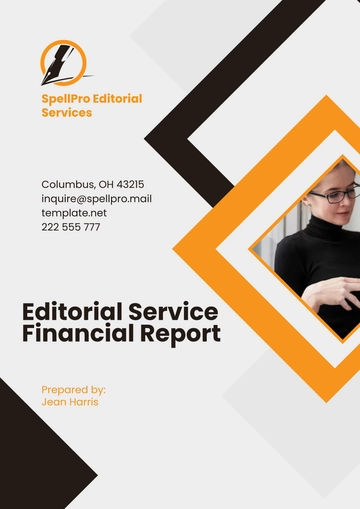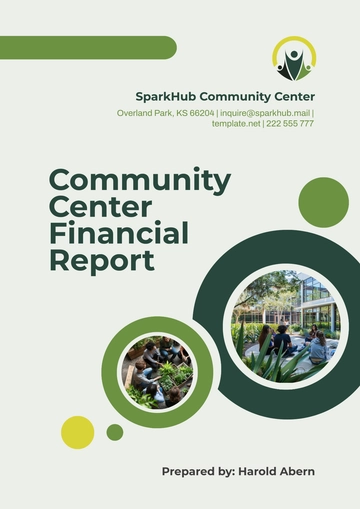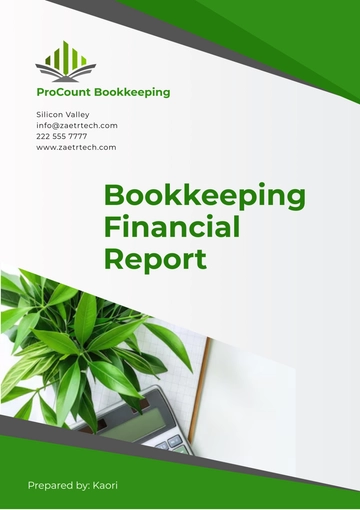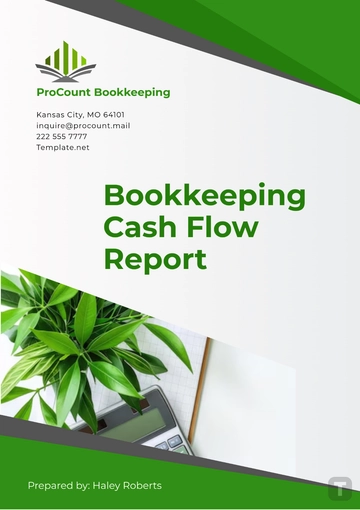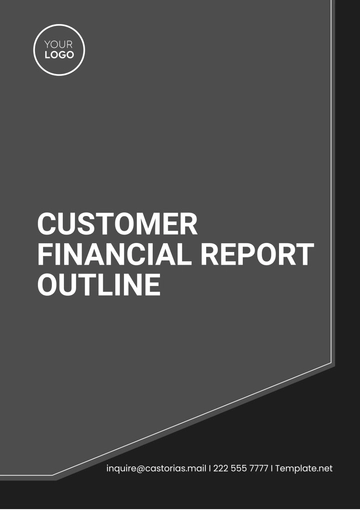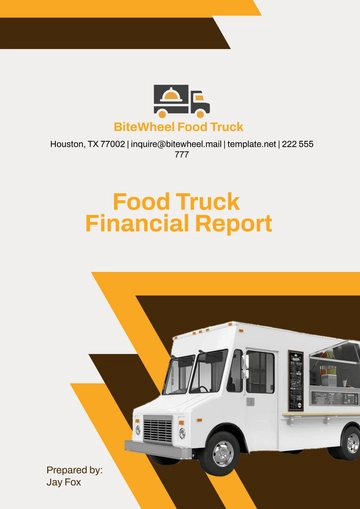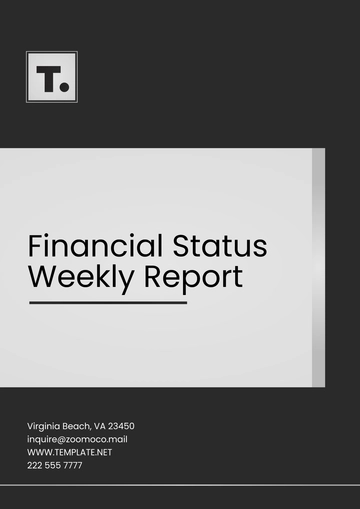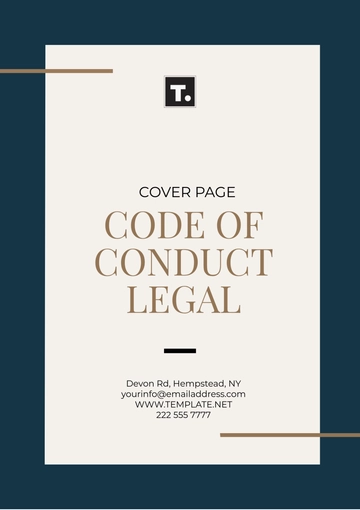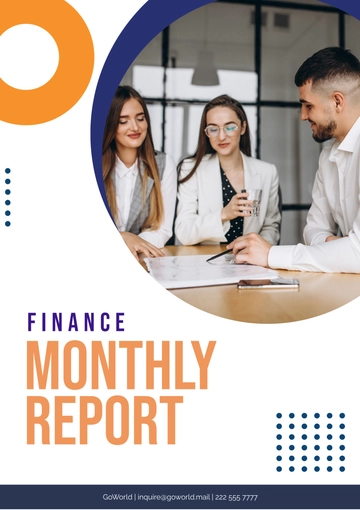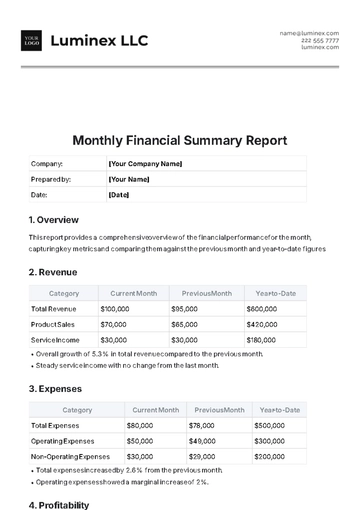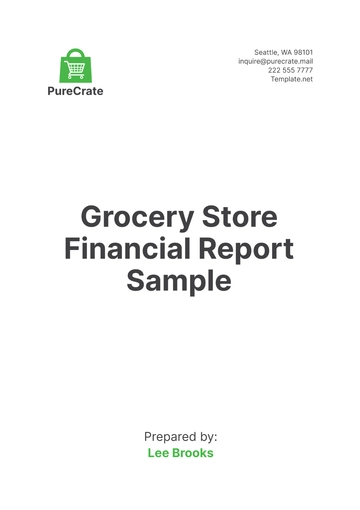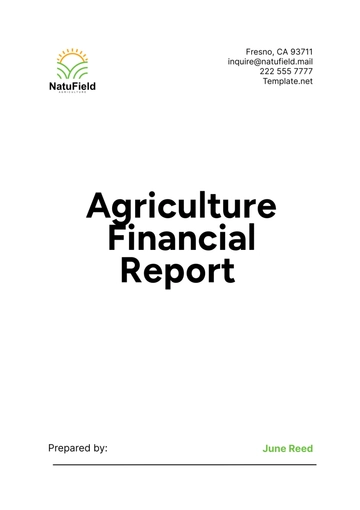Free Financial Reporting Portfolio

Executive Summary
A. Key Metrics
Revenue
During the fiscal year 2050, [Your Company Name] achieved a robust total revenue of [$10,500,000]. This figure encompasses the entirety of income derived from our diverse range of core business activities, including product sales, services, and any additional revenue streams.
Net Profit
After meticulous consideration of all incurred expenses and taxes, [Your Company Name] proudly presents a net profit of [$3,200,000]. This signifies the company's resilient financial health, illustrating the substantial funds available for reinvestment, expansion, and equitable distribution among stakeholders.
Earnings per Share
The earnings per share (EPS) metric stands impressively at [$5.75]. This pivotal indicator is paramount for our investors, revealing the company's ability to generate profits on a per-share basis, thereby contributing to the overall value proposition for our shareholders.
Financial Statements
A. Income Statement
Revenue
In the fiscal year 2050, [Your Company Name] witnessed a commendable revenue generation of [$10,500,000]. This comprehensive figure encompasses revenue streams from product sales, services rendered, and any ancillary income sources.
Cost of Goods Sold (COGS)
The meticulous evaluation of direct costs associated with the production of goods or services sold during this period yielded a Cost of Goods Sold (COGS) of [$4,500,000]. This metric reflects the efficiency of our production processes and cost management strategies.
Gross Profit
Subtracting the COGS from the total revenue reveals a robust gross profit of [$6,000,000]. This metric serves as a testament to the effectiveness of [Your Company Name]'s revenue generation and operational efficiency.
Operating Expenses
Operating expenses for the fiscal year 2050 amounted to [$2,800,000]. This includes critical costs such as salaries, utilities, marketing, and other day-to-day expenses vital for sustaining and enhancing our business operations.
Net Profit
After meticulous consideration of all operating expenses, taxes, and other financial obligations, [Your Company Name] achieved a commendable net profit of [$3,200,000]. This figure underscores the company's commitment to financial prudence and sustained profitability.
Financial Performance Analysis
A. Profitability Ratios
Gross Profit Margin
The Gross Profit Margin for the fiscal year 2050 is calculated as ($6,000,000 / $10,500,000) * 100, resulting in an impressive 57.14%. This metric signifies the efficiency of [Your Company Name]'s production processes and pricing strategies, with a higher percentage indicating better profitability.
Net Profit Margin
The Net Profit Margin, calculated as ($3,200,000 / $10,500,000) * 100, stands at 30.48%. This metric highlights the portion of revenue retained as net profit after all expenses, showcasing [Your Company Name]'s ability to manage costs effectively.
B. Liquidity Ratios
Current Ratio
The Current Ratio, calculated as Current Assets / Current Liabilities, is 2.5:1. This indicates [Your Company Name]'s strong ability to meet short-term financial obligations with available current assets.
Quick Ratio
The Quick Ratio, calculated as (Current Assets - Inventory) / Current Liabilities, stands at 1.8:1. This metric reflects the company's capacity to cover immediate liabilities without relying on the sale of inventory.
C. Efficiency Ratios
Inventory Turnover
The Inventory Turnover Ratio, calculated as Cost of Goods Sold / Average Inventory, is 4.2 times. This demonstrates the efficiency of [Your Company Name]'s inventory management, indicating the number of times inventory is sold and replaced within the fiscal year.
Accounts Receivable Turnover
The Accounts Receivable Turnover Ratio, calculated as Net Credit Sales / Average Accounts Receivable, is 6.8 times. This metric reveals how efficiently [Your Company Name] collects receivables, reflecting strong credit management practices.
Financial Forecast
A. Forecasted Metrics
Revenue
The forecasted revenue for the upcoming fiscal year [2051] is anticipated to reach [$12,000,000]. This projection is based on market analysis, current trends, and [Your Company Name]'s strategic initiatives.
Operating Expenses
Operating expenses for the same period are estimated at [$3,200,000]. This projection considers potential changes in expenses and strategic investments required to support business growth.
Net Profit
The forecasted net profit for the upcoming fiscal year is projected to be [$4,000,000]. This prediction reflects [Your Company Name]'s proactive approach to managing costs and capitalizing on revenue opportunities.
Risk Analysis
A. Market Risks
Competition Analysis
In a comprehensive analysis of our market, key competitors such as Competitor A and Competitor B were identified. Market share assessments indicate that [Your Company Name] currently holds a competitive market share of [22%], positioning us as a significant player in the industry.
Market Trends
Observing market trends is crucial. Currently, there is a growing demand for their products and services and an emerging trend. [Your Company Name] is strategically positioned to capitalize on these trends, enhancing our competitive edge.
B. Credit Risks
Customer Credit Analysis
A detailed examination of customer creditworthiness indicates that [66%]% of our customers have a credit rating of [54%], while [34]% fall within the [46%] category. This diverse customer credit profile minimizes the risk of bad debts.
Debt Management
The overview of outstanding debts reveals a debt-to-equity ratio of [5:2:1]. [Your Company Name] maintains a prudent approach to debt management, ensuring a healthy balance between leveraging opportunities and financial stability.
C. Operational Risks
Supply Chain Risks
Evaluation of the supply chain indicates moderate vulnerabilities. Mitigation strategies are in place, such as diversifying suppliers and maintaining strategic reserves, to minimize potential disruptions.
Regulatory Compliance
A comprehensive assessment of regulatory requirements reveals that [Your Company Name] is fully compliant with all relevant regulations. Regular audits and proactive engagement with regulatory bodies ensure continued adherence to evolving compliance standards.
Investment Strategies
A. Capital Expenditure
In the pursuit of sustainable growth, [Your Company Name] is strategically planning a capital expenditure of [$2,500,000] for the upcoming fiscal year. This allocation is intended for initiatives such as expanding production capacity, upgrading technology infrastructure, and optimizing operational efficiency.
B. Return on Investment (ROI)
The expected Return on Investment for the aforementioned capital expenditure is forecasted to be [15%]. This analysis considers the anticipated increase in revenue, cost savings, and other quantifiable benefits resulting from the planned investments. [Your Company Name] remains committed to optimizing returns and maximizing shareholder value.
Environmental, Social, and Governance (ESG) Initiatives
A. Environmental Sustainability
As part of our commitment to environmental responsibility, [Your Company Name] is actively pursuing initiatives to reduce our carbon footprint. Key measures include investing [$1,000,000] in energy-efficient technologies, leading to an anticipated reduction of [20%] in carbon emissions by [2060].
B. Social Impact
[Your Company Name] recognizes the importance of social responsibility. Through partnerships with local communities and charitable organizations, we aim to contribute [$500,000] to social impact projects by [2065]. This includes initiatives focused on education, healthcare, and community development.
C. Governance Practices
Maintaining high governance standards is paramount. [Your Company Name] is committed to transparent and ethical business practices, ensuring compliance with all relevant laws and regulations. Regular governance audits are conducted, with an allocated budget of [$150,000], to uphold accountability and foster trust among stakeholders.
Outlook and Future Prospects
A. Market Expansion
[Your Company Name] envisions market expansion opportunities in new markets or regions. Through strategic partnerships and market analysis, we aim to capture a larger share of the market, projecting a revenue increase of [$5,000,000] by [2055].
B. Technological Advancements
Embracing technological advancements is integral to our future success. Investments in research and development will focus on specific technologies, with a budget of [$3,000,000], positioning [Your Company Name] as an industry leader. Anticipated technological advancements are projected to result in cost efficiencies and enhanced product/service offerings.
Innovation and Research Development
A. R&D Investment
In fostering a culture of innovation, [Your Company Name] is committing [$2,200,000] to Research and Development (R&D) initiatives for the upcoming fiscal year. This investment will be allocated to projects such as developing advanced technologies, enhancing product offerings, and staying at the forefront of industry trends.
B. Product Innovation
A significant portion of the R&D investment, [$1,000,000], will be directed towards product innovation. This includes developing cutting-edge features, improving existing offerings, and ensuring [Your Company Name] remains a pioneer in delivering innovative solutions to meet evolving market demands.
C. Collaboration and Partnerships
To augment innovation efforts, [Your Company Name] is actively seeking collaborations and partnerships within the industry. An allocated budget of [$500,000] will support joint ventures, research collaborations, and strategic partnerships that foster knowledge exchange and accelerate innovation.
D. Intellectual Property
Protecting our innovations is paramount. With an investment of [$200,000], [Your Company Name] will strengthen intellectual property protection, including patents and trademarks, to safeguard our innovative creations and maintain a competitive edge in the market.
Stakeholder Communication and Engagement
A. Transparent Communication
To ensure transparent communication with stakeholders, [Your Company Name] allocates resources to enhance communication channels. An investment of [$300,000] will be directed towards improving communication platforms, conducting regular shareholder meetings, and disseminating clear and timely financial information.
B. Stakeholder Engagement Programs
Recognizing the importance of stakeholder engagement, [Your Company Name] will implement programs aimed at gathering feedback and insights. An allocated budget of [$150,000] will support initiatives such as customer surveys, focus groups, and investor feedback sessions to strengthen relationships with stakeholders.
C. Social Media Presence
In an increasingly digital landscape, [Your Company Name] will enhance its social media presence to engage with a broader audience. With an investment of [$100,000], we will implement targeted social media campaigns, share relevant industry insights, and foster community engagement to build a strong online presence.
Conclusion
The financial reporting portfolio highlights [Your Company Name]'s robust financial performance and strategic positioning in the market. The company's profitability, liquidity, and operational efficiency are reflected in key metrics such as a Net Profit Margin of [30.48%], Current Ratio of [2.5:1], and an Inventory Turnover of [4.2] times.
Looking ahead, the forecasted metrics for the upcoming fiscal year, including an anticipated revenue of [$12,000,000] and a projected net profit of [$4,000,000], signify [Your Company Name]'s commitment to sustainable growth.
The risk analysis underscores the proactive measures taken to address market, credit, and operational risks, ensuring [Your Company Name] is well-prepared for challenges and poised for continued success.
For further inquiries or detailed discussions, please contact:
[Your Name]
[Your Company Email]
[Your Company Number]
- 100% Customizable, free editor
- Access 1 Million+ Templates, photo’s & graphics
- Download or share as a template
- Click and replace photos, graphics, text, backgrounds
- Resize, crop, AI write & more
- Access advanced editor
Elevate financial reporting with the Financial Reporting Portfolio Template on Template.net. This editable and customizable portfolio simplifies the reporting process. Tailor content effortlessly using our Ai Editor Tool, ensuring adaptability and precision. Elevate your financial documentation with this user-friendly template, offering a comprehensive approach to crafting personalized reporting portfolios for effective communication and streamlined financial analysis.
You may also like
- Sales Report
- Daily Report
- Project Report
- Business Report
- Weekly Report
- Incident Report
- Annual Report
- Report Layout
- Report Design
- Progress Report
- Marketing Report
- Company Report
- Monthly Report
- Audit Report
- Status Report
- School Report
- Reports Hr
- Management Report
- Project Status Report
- Handover Report
- Health And Safety Report
- Restaurant Report
- Construction Report
- Research Report
- Evaluation Report
- Investigation Report
- Employee Report
- Advertising Report
- Weekly Status Report
- Project Management Report
- Finance Report
- Service Report
- Technical Report
- Meeting Report
- Quarterly Report
- Inspection Report
- Medical Report
- Test Report
- Summary Report
- Inventory Report
- Valuation Report
- Operations Report
- Payroll Report
- Training Report
- Job Report
- Case Report
- Performance Report
- Board Report
- Internal Audit Report
- Student Report
- Monthly Management Report
- Small Business Report
- Accident Report
- Call Center Report
- Activity Report
- IT and Software Report
- Internship Report
- Visit Report
- Product Report
- Book Report
- Property Report
- Recruitment Report
- University Report
- Event Report
- SEO Report
- Conference Report
- Narrative Report
- Nursing Home Report
- Preschool Report
- Call Report
- Customer Report
- Employee Incident Report
- Accomplishment Report
- Social Media Report
- Work From Home Report
- Security Report
- Damage Report
- Quality Report
- Internal Report
- Nurse Report
- Real Estate Report
- Hotel Report
- Equipment Report
- Credit Report
- Field Report
- Non Profit Report
- Maintenance Report
- News Report
- Survey Report
- Executive Report
- Law Firm Report
- Advertising Agency Report
- Interior Design Report
- Travel Agency Report
- Stock Report
- Salon Report
- Bug Report
- Workplace Report
- Action Report
- Investor Report
- Cleaning Services Report
- Consulting Report
- Freelancer Report
- Site Visit Report
- Trip Report
- Classroom Observation Report
- Vehicle Report
- Final Report
- Software Report



